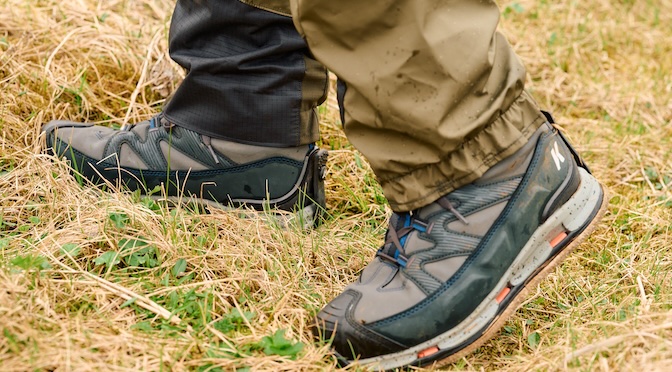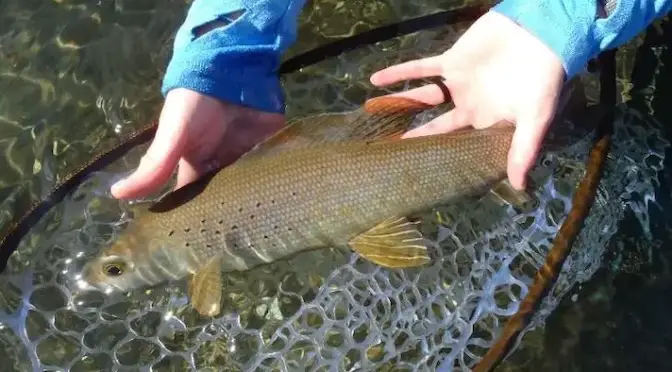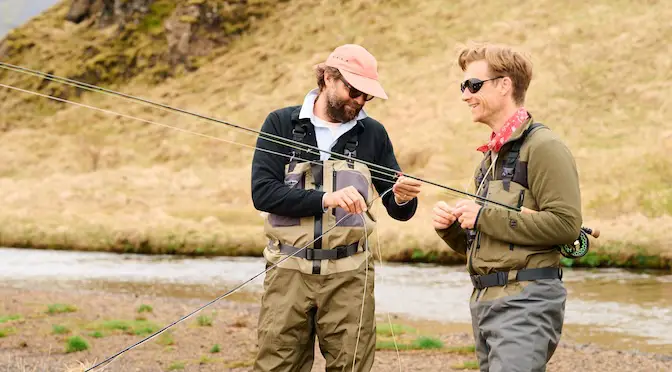Last updated on January 10th, 2024.
- Wading Wisdom #13 – Simon Gawesworth - July 7, 2025
- On the Water with the Korkers Bantam Lite - June 26, 2025
- How to Find Trout in Rivers & Streams Anywhere - June 13, 2025
The midsummer period is a beautiful time to fish in many regions of the Northern hemisphere. For example Switzerland, where high alpine lakes hold populations of Namaycush.
This freshwater char, which was supposedly brought to Europe from North America more than 100 year ago, can survive in lakes close to 7500 ft above sea level. Since the summers don’t last long that far up they have to feed a lot in a short span of time. Yet they can be very difficult to catch as the water is mostly crystal clear.
Oftentimes the small bodies of water high in the mountains are not ice-free before the end of June or the beginning of July. Most of them are so far up that having a chance to catch a Namaycush often means several hours of hiking. We started our ascent from the main valley of the lower Engadine, where the river Inn is still juvenile not far from its source at the Maloja pass near St. Moritz.
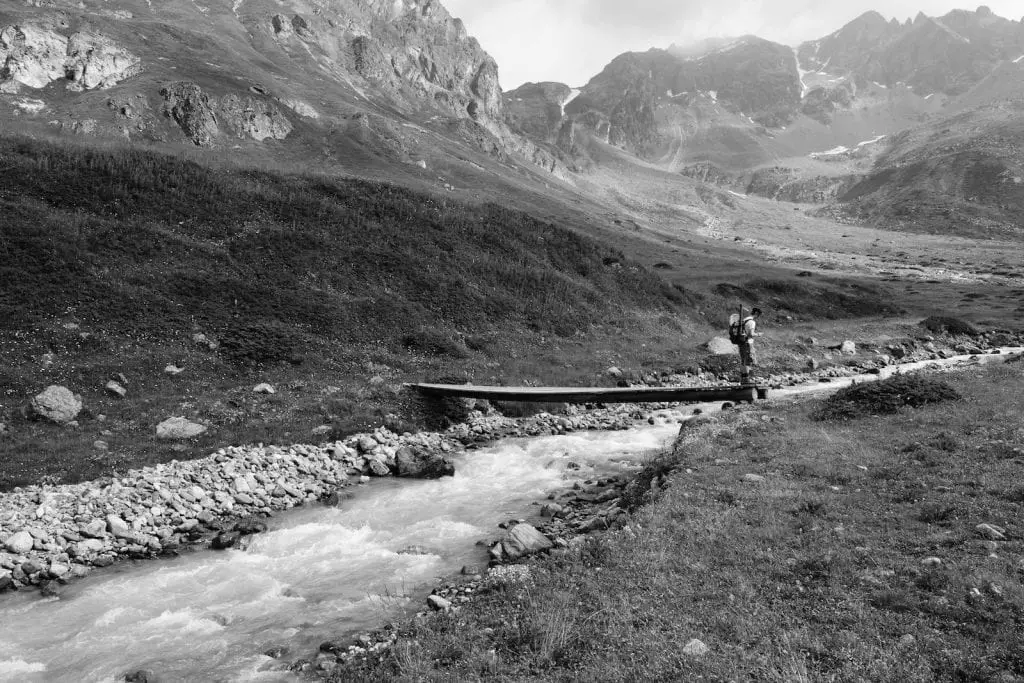
Working hard for a Namaycush
The smaller tributary valleys most often have forest roads that are used by the local farmers to drive their cattle and sheep up and down the mountains at the beginning and end of summer. Hiking on these roads is comparatively easy. However, in our case this part of the journey already covered a couple of miles. As we departed early in the morning, high temperatures were not yet a problem. As the road got steeper it turned into a footpath at about 6000 ft above sea level.
The summers are short in the these valleys. All wildlife has to make the most of the warm temperatures. The variety of wild flowers and bushes was astounding and something I had not expected that high up in the Alps. Soon after, the footpath ended and from now on it was a cross-country ascent straight up to a ridge where the two small lakes I intended to fish were supposed to be according to the map in my hand.

We had now been on our feet for about two hours and the temperatures were rising. Even at about 7000 ft we could feel the heat just in time for the steepest part of the ascent. But it wasn’t long before we reached the ridge and could at least see one of the lakes we had picked out to fish for Namaycush. However, when we got to the first one we couldn’t spot a single fish and hence decided to take an ice cold bath instead.
Luckily the other small lake was already in sight as well and coming closer I could already see a few rises. That looked promising. I sat down on a small plateau a few feet about water level to have a better view and to try to understand the pattern of the rising fish. While preparing my gear I kept looking at the lake’s surface which to my discontent lay as flat as a mirror in the gleaming sun. Two factors that would certainly not make fishing easier in the gin clear water.
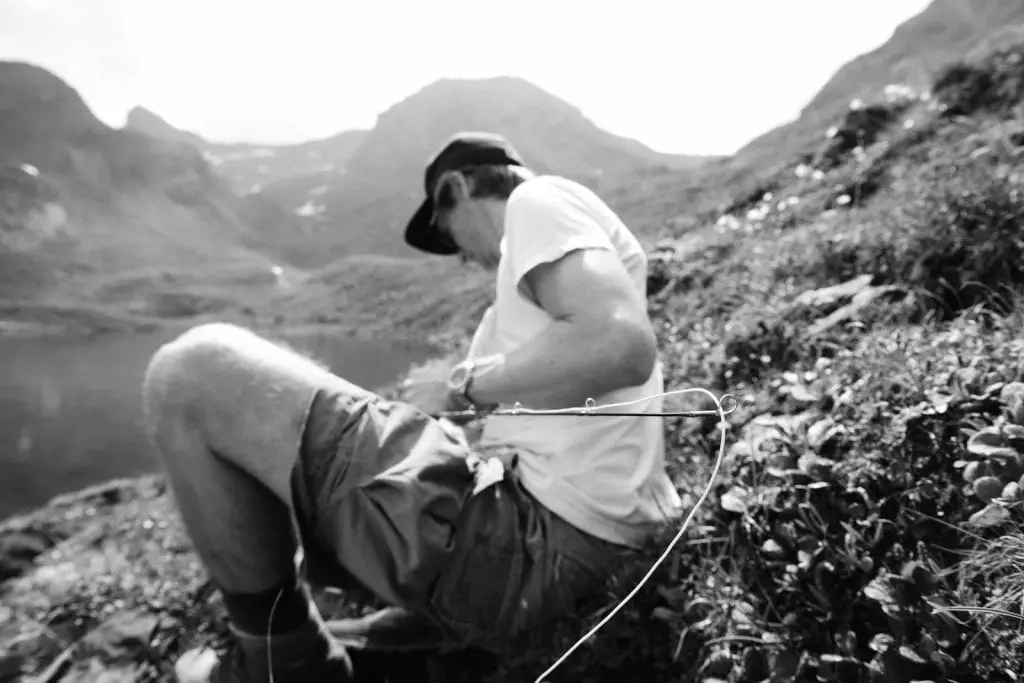
Changing Tactics for Success
I carefully dug behind a big rock at the edge of the water to try to avoid spooking fish. I had seen a few Namaycush cruise along the shoreline. First up I tried a small dry fly. The presentation alone was difficult as the line and even the tippet cast a shadow at the bottom of the lake. I managed to attract the attention of a few fish but they all shied away from the fly when they got to within a few inches.

The next pattern I pulled out of my fly box was a rather heavy streamer in relation to the water I fished. I intended to present it deep down closer to the bottom of the lake where I had seen one or two better fish. I had also decreased the diameter of the tippet to further reduce its visibility. Different approach, same result however. Although I managed to attract the attention of a few fish none of them decided to take my fly.

I started to leave my position and wander around the edge of the small lake trying to find more promising spots. On the opposite side there was a small creek flowing out of the lake. I slowly approached that zone as I thought the faster flowing water would give me a better chance to hook into a fish. As I got closer to where the creek left the lake, I saw dozens of small fish that seemed to be looking for water with a higher degree of oxygen. I watched my first casts anxiously but nothing happened, not even the small Namaycush went for my fly.

The last ace up my sleeve was a small nymph pattern that I had successfully fished before in alpine waters. I let it slowly sink towards the bottom and suddenly the line became tight. I was into a fish. As it came towards the surface I realized it wasn’t as big as I had initially thought but still a beautiful specimen.
After a good homemade lunch, I fished a little more into the afternoon. But as the sun was at its highest point and burning down onto the water I didn’t manage to convince any more fish of my offer. As we faced about a three hour walked back to where we had parked the car, we decided to back things up and descend. Back at our house I could certainly feel the work we had put into finding those beautiful fish. I let my mind wander back to the gin clear water surrounded by peaks scraping 10,000 ft and was very fond of the day’s trip. This was the classic case in which a day of fishing can feel great despite a poor yield.
For more information on fly fishing the Engadine click here
Meet Renato Vitalini – Custom Rod Builder from Scuol, Engadine


